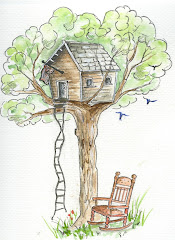
While thinking about the Tillerman children, I was reminded of numerous other siblings that are largely written into “types,” both to make it easier to differentiate between them all, and also to allow different interactions between each character and the trials they must face. The two most obvious comparisons I thought of were the Alden children of the Boxcar Children series, and the Pevensies of the Narnia series. Both families have two boys and two girls, both go on adventures without parents, and the Aldens in particular, find themselves living with their grandfather after their parents die. A couple of others are the March sisters of Little Women, and basically any of the sister groups from a Jane Austen novel, but the Bennets of Pride and Prejudice in particular.
I know that I, as an only child, am always fascinated by sibling dynamics both in real life and in literature. Having multiple protagonists around the same age and with the same background seems like an ideal way for an author to present a common obstacle, and the many ways a person might deal with that obstacle. Thus, the author can stretch their creativity by creating separate, though equally relatable characters who must make decisions based on their own individual personalities. A reader will engage best with the character they find most relatable, based on how the character deals with that obstacle. Reading a book is pretty difficult when you feel you can’t relate to any of the characters, and I think this is especially true for children who are very egotistical, and often want to read about someone just like themselves.

In Dicey’s Song, probably the main obstacle the children face is fitting into their new lives with Gram. All of the kids go about this differently, and they must all overcome other individual hurtles as well to finally feel “at home”. James, book-reading genius extraordinaire, dumbs himself down considerably in an attempt to fit in with the rest of his average classmates, and though he still gets good grades, his whole outlook is based on what he can do to make himself liked by his classmates. This changes when he essentially “puts himself out there” and makes friends with a peer, just for being himself.
Maybeth, on the other hand, continues down her path as an illiterate third grade outcast in her new home, still unable to read and so terrified of making a mistake and getting ridiculed that she virtually disappears in class. Her love and talent for music, however, shows us a whole other side of her, and the realization that she needs to learn differently than her peers puts her on the right track.
Sammy, meanwhile, tries to turn over a new leaf at school, by becoming a little angel instead of that kid in detention for fighting for the hundredth time. He experiences great conflict between wanting to stick up for his grandmother and letting the rumors and insults roll off his back. It is only after Gram shows him (and the other students) that she is made of tougher stuff than he thinks that Sammy is able to stop trying to protect her.
Finally, Dicey must struggle with her new role as a child (ironically enough), and not as a mother to the other kids, yet must also try to balance her role as a child with her role as a young woman, (whether she likes it or not). Dicey spent her whole life gradually becoming more like a mother-figure to her younger siblings than their actual mother, but then must cede this identity to Gram, and accept her role as someone to be taken care of, and not necessarily someone that has to take care of others. She ends up reconciling her roles as parent and child by forming a sort of co-parenting relationship with Gram.
Thus, by the end of the novel, the children are well on their way to fitting into their new home and new life, but with very different paths to that same end.
For a book about four real-life sibling that lost their parents and each other (at least for a time), you might want to check out The Kids Are All Right by Diana, Liz, Amanda, and Dan Welch, which is told from their alternating perspectives.


